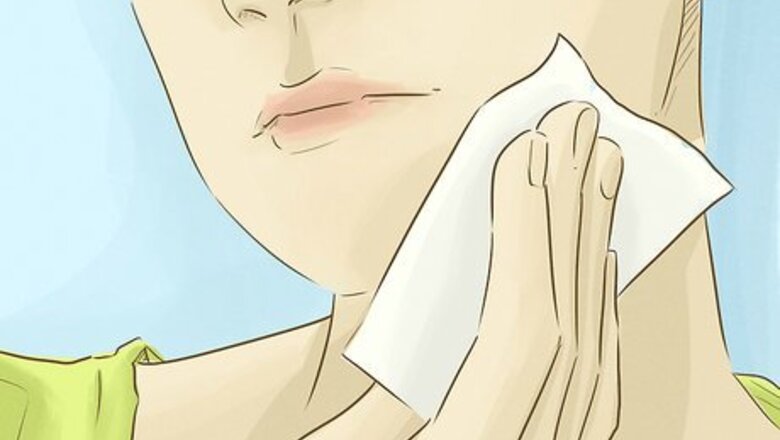
views
Handling a Mild to Moderate Wound
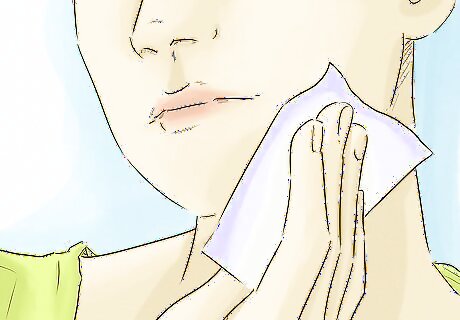
Apply gentle pressure to the small wound. Quickly grab a clean cloth, towel, or piece of gauze, and apply gentle pressure to the wounded region. Hold it there for 3 minutes or until the bleeding stops, a small scrape or wound takes 25 to 30 seconds to clot, while a larger wound will take longer. During this process, if the towel or gauze becomes soaked with blood, place another absorptive layer on top of it. Do not remove the first layer of saturated gauze, as this will rip off the forming scab and re-open the wound. To remove the first layer of gauze or cloth attached to a wound, pour sterile water on the gauze as it lays on the wound so you will not cause it to start bleeding again. Always wash your hands before providing first aid, especially when dealing with an open wound. If you have nitrile medical gloves available, put these on before beginning the first aid.
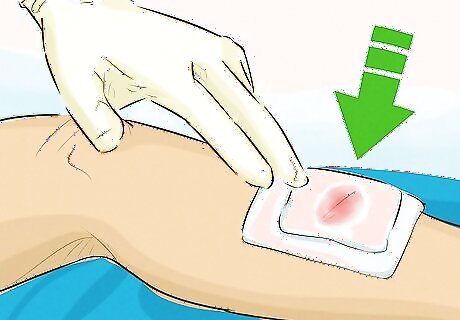
Stop the bleeding. You’ll need to hold a towel or gauze in place for a few minutes to fully stop the bleeding. In the case of a minor scratch or scrape, bleeding will normally stop not long after the cut is sustained.
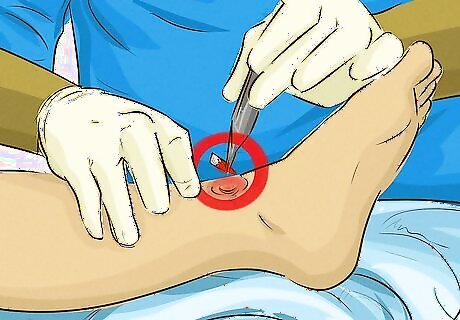
Remove any debris from the wound. Once the bleeding has stopped, you will need to clean out any residual dirt or debris from the small wound. Using a pair of tweezers, gently extract any small stones or pieces of soil that may be stuck in the exposed flesh. It’s okay to leave specks of dirt in the wound at this point, as they’ll be rinsed out when you pour water on the wound. Realize that this may cause the wound to start bleeding again, just apply pressure for 3 minutes so the wound will clot again.
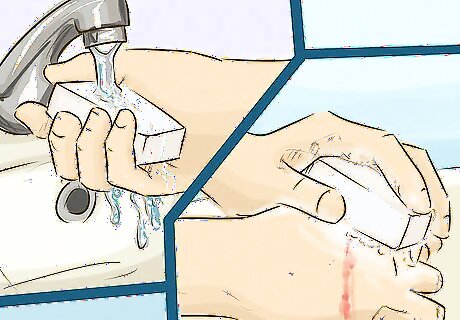
Clean the wound with cool water. Now that the wound is free of dirt and debris, your next priority is to clean the wounded area. If you’re near a house or building, you can use the water from a faucet or hose. If not, rinse the wound with clean water from a water bottle. Running water over the area for 5-10 minutes will remove any lingering dirt or bacteria. Never apply any antibiotic until the wound is cleaned out. If you have them, use soap and water to better clean the wound.
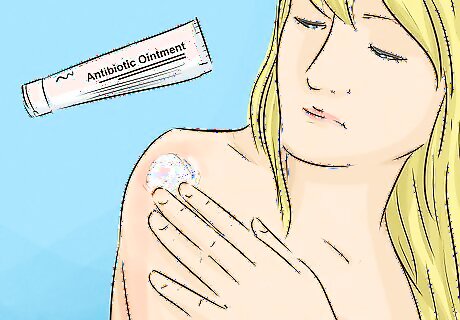
Deposit a thin layer of antibiotic cream on the wound. This cream will kill any bacteria that may have gotten in the wound, and help the wound to scab and heal more quickly. The cream will also seal the wound, making it airtight. Common brands of antibiotic creams include Neosporin, Polysporin, A & D ointment or Bacitracin. Do not put rubbing alcohol, hydrogen peroxide or iodine on an open wound. These antiseptics are very caustic and will burn the wound, causing pain, and can even delay healing and increase scarring. These are only acceptable if there is no other way to sterilize the wound.
Managing a Severe Open or Puncture Wound
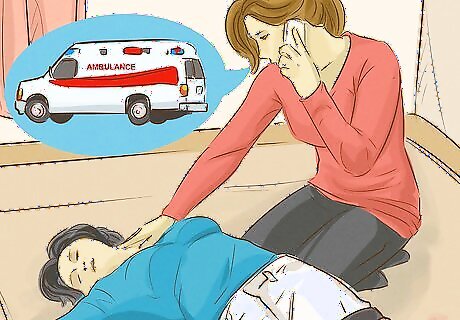
Call emergency services for a serious injury. In any serious medical situation, always call emergency services after or during the first-aid process. While you don't need to call emergency services for minor scrapes and cuts (including bruises, superficial cuts, or mild burns), it's best to be cautious in more serious circumstances. Call emergency services in the case of: Broken bones (especially if visible through the skin). Bleeding that won't stop. Vomiting blood, or large amounts of blood coming out of any orifice. Spurting or gushing blood. Any wounds where fat or muscle tissue is exposed.
Remove only small impaled objects from a wound. Then apply pressure to the bleeding wound. Extract the object slowly. If you rip it out suddenly, you may enlarge the puncture wound or cause further tissue damage and blood loss. If the impaling object is very large, and you’re concerned that the victim may bleed out if you remove the object, leave it in and try to stabilize the impaled object until the emergency crew arrives and takes over. Do not let go of the object until told to do so by the paramedics.
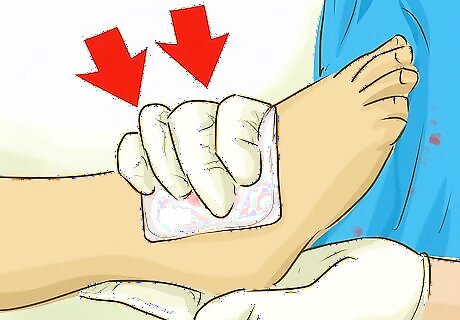
Press firmly on the wound with a sterile dressing. Depending on the severity of the wound or puncture, you may need to press quite firmly on the bloody area to stop the bleeding. Apply pressure using a clean piece of medical gauze from a first aid kit or a clean cotton cloth. In an emergency, you may need to use a piece of clothing or even your bare hands. Before interacting with any open gash or puncture wound, make sure to clean your hands with soap. If it is an emergency you might only have time to put on plastic gloves from the first aid kit.
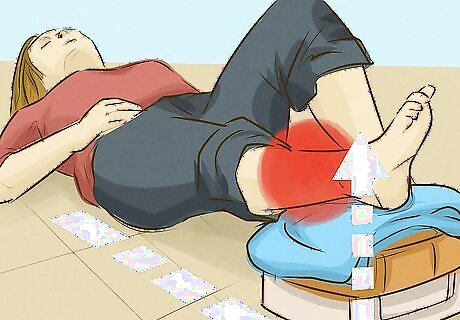
Elevate the injured area above the heart. This will diminish the amount of blood flowing to the wounded area, and make the bleeding stop sooner. If you’re at home, rest the injured area on a chair or sofa cushion. If you’re outdoors, you can rest the elevated limb on a rock or on a balled-up jacket. Keep pressure on the wound or puncture while elevating the limb or body part. If you’re dealing with a small puncture wound, the bleeding may soon stop on its own. However, for a more serious open or puncture wound, stopping the bleeding immediately is of the utmost importance.
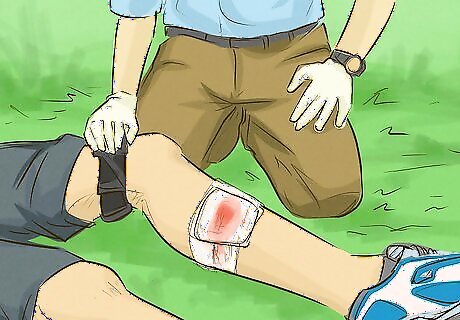
Keep the victim from moving in case of fracture. If you can tell that the victim has a broken bone (or if the fracture is clearly visible), tell the victim to remain still. They should not move the limb with broken bones, or the fracture may become worse (or cut into the surrounding flesh). If the bones have broken through the skin, make sure to stop the bleeding before dealing with the fracture. Before medical personnel arrive, loosely wrap the open fracture with clean gauze or fabric and keep it stable.
Bandaging, Caring, and Preparing for Wounds
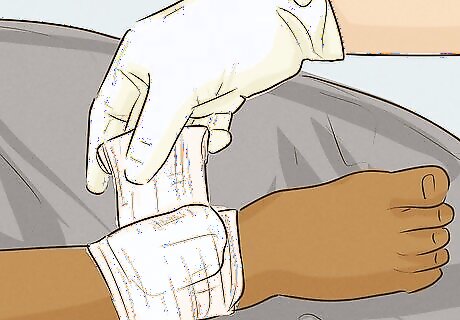
Dress the wound properly with a bandage. If the wound is more serious than a minor scrape or scratch, you’ll need to apply a bandage as part of the first-aid procedure. Take a piece of sterile gauze from your first-aid kit, and place it over the open wound. Then use medical adhesive tape to secure the gauze to the skin on all four sides. If the wound is smaller, just use a standard Band-Aid to cover the open area. You can use Steri-strips to pull the sides of the wound together if it is a sliced cut, then put on antibiotic cream or ointment and cover with gauze and tape.
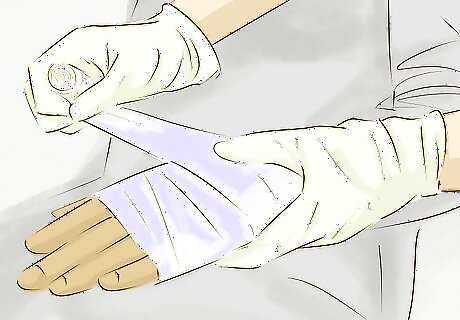
Change the wound’s dressing often. If the wound continues to bleed in small amounts, or if the blood soaks through the gauze bandage, you’ll need to change the dressing. Keep the wound clean and dry, and plan to change the bandage three times per day as long as needed. As long as the wound continues bleeding, redress it with a brand new bandage, along with some fresh antibiotic cream.
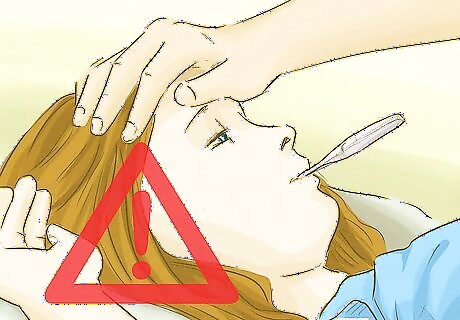
Monitor the wound for infection. With any wound more serious than a minor scrape, the wounded individual runs the risk of contracting an infection. Puncture wounds are especially prone to infection, since they can heal quickly and keep bacteria inside. If you suspect that the wound may be getting infected, take the wounded individual to a doctor immediately. Common signs of infection include: Increased swelling Fever Increasing pain Redness or warmth Draining pus Red streaks coming from the wound and starting up a vein is especially dangerous and needs immediate medical attention, do not wait! Puncture wounds may also necessitate a tetanus shot.
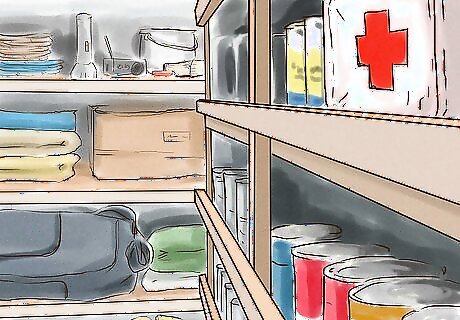
Stock a first-aid kit wherever possible. You should always have a first-aid kit handy in your home and in your car. Always bring one with you if you're in nature hiking, camping, or cycling. Standard stocked first-aid kits are usually readily available at your local pharmacy at reasonable prices. If your child plays sports or you go on a family vacation, bringing a first-aid kit is also advisable.
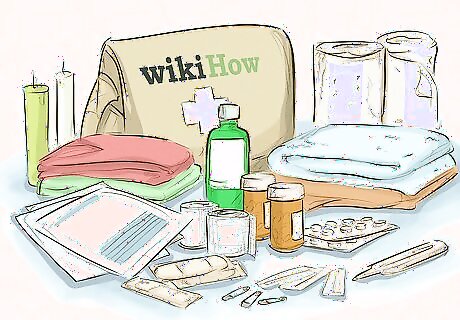
Assemble your own first-aid kit. If you would prefer not to purchase a first-aid kit, or would rather customize your kit, you can purchase the necessary supplies at a grocery store, pharmacy, or medical supply store. Make sure to include various sizes of bandages, Neosporin, gauze, tape, scissors, a pair of tweezers, rubbing alcohol (for cleaning your hands or equipment, not the wound) a small bottle of sterile water, and cotton swabs. Disposable instant ice packs can be useful as well. Store all of these elements together in an easily-opened zippered pouch or a plastic box, such as a Tupperware container. Clearly mark the container as a first aid kit so it can be easily identified in an emergency.















Comments
0 comment